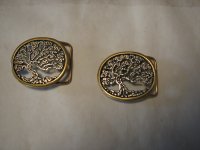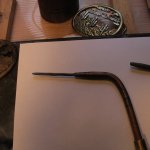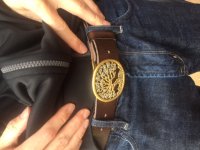You can do that job in several different ways.
You could use low temp solder like a plumber does... -under 800 deg. F melting - with a mild acid flux. That can be done with any heat source from propane/air on up to Mapp or oxy/acetylene. You can use either old fashioned lead/tin soft solder or one of the newer lead free tin/cadmium types. Downside is that it is difficult to control just exactly where the solder will go and how much to use. Soldering is dependent on clean metal, good flux, and not getting things too hot. Just hot enough to flow.
And the joint won't be very strong. Basically it is just a little bit stronger than the solder itself.
If you are handy with an oxy/acetylene torch you can do that job in several other different ways.
For nicer control you can step up to an oxy/acetylene welding&brazing torch. The copper doesn't have to be as clean, the flux is often a boxax powder rather than a paste, and the filler rod can be any of a dozen types of brass (copper and zinc) , bronze (copper and tin), or either one with enough nickel or silver to make a very hard nickel-brazed joint. The jointing work can be done with beautiful control - it's what jewelers use for tiny work. And a nickel-brazed joint is stong enough to withstand hammering the finished product into shape. All a matter of practice, and you can get the rod for a couple of bucks/lb at the local welding supply shop.
Here are some examples of free-hand welding - there's some brass, bronze, and nickel brazing in these pieces, but not a drop of solder.
rScotty


